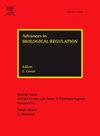Phosphorylation impacts GLE1 nuclear localization and association with DDX1
Abstract
Gle1 regulates gene expression at multiple steps from transcription to mRNA export to translation under stressed and non-stressed conditions. To better understand Gle1 function in stressed human cells, specific antibodies were generated that recognized the phosphorylation of threonine residue 102 (T102) in Gle1. A series of in vitro kinase assays indicated that T102 phosphorylation serves as a priming event for further phosphorylation in Gle1's N-terminal low complexity cluster. Indirect immunofluorescence microscopy with the anti-Gle1-pT102 antibodies revealed that basally phosphorylated Gle1 was pre-dominantly nuclear with punctate distribution; however, under sodium arsenite-induced stress, more cytoplasmic localization was detected. Immunoprecipitation with the anti-Gle1-pT102 antibody resulted in co-isolation of Gle1-pT102 with the DEAD-box protein DDX1 in a phosphatase sensitive manner. This suggested Gle1 phosphorylation might be linked to its role in regulating DDX1 during transcription termination. Notably, whereas the total Gle1-DDX1 association was decreased when Gle1 nucleocytoplasmic shuttling was disrupted, co-isolation of Gle1-pT102 and DDX1 increased under the same conditions. Taken together, these studies demonstrated that Gle1 phosphorylation impacts its cellular distribution and potentially drives nuclear Gle1 functions in transcription termination. We propose a model wherein phosphorylation of Gle1 either reduces its nucleocytoplasmic shuttling capacity or increases its binding affinity with nuclear interaction partners.

 求助内容:
求助内容: 应助结果提醒方式:
应助结果提醒方式:


